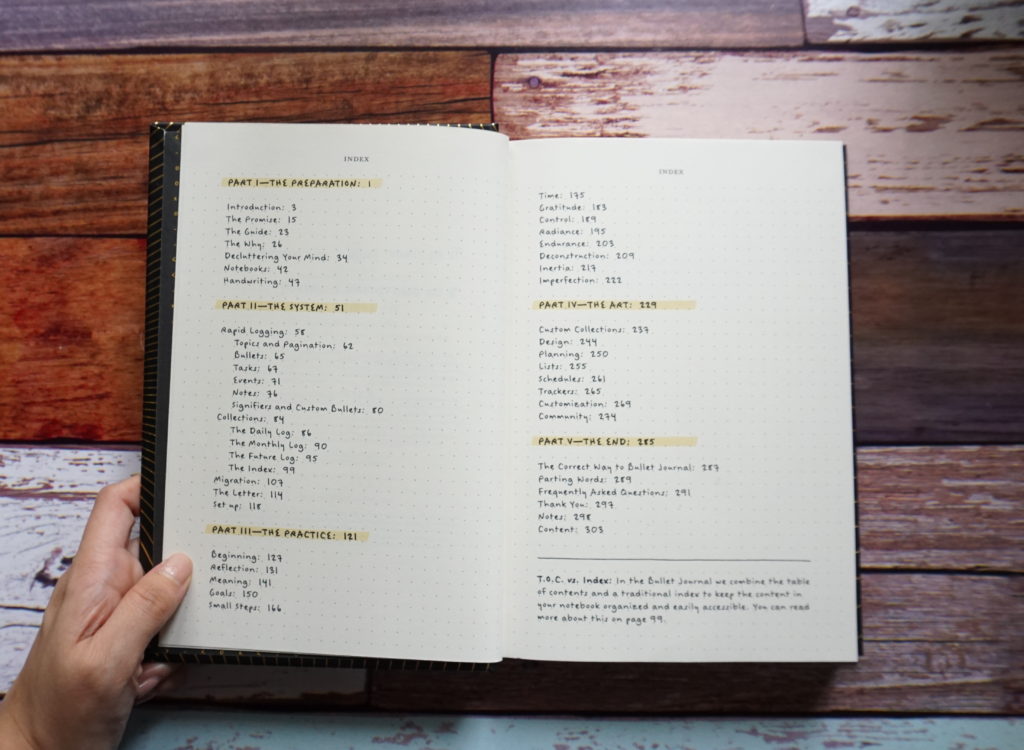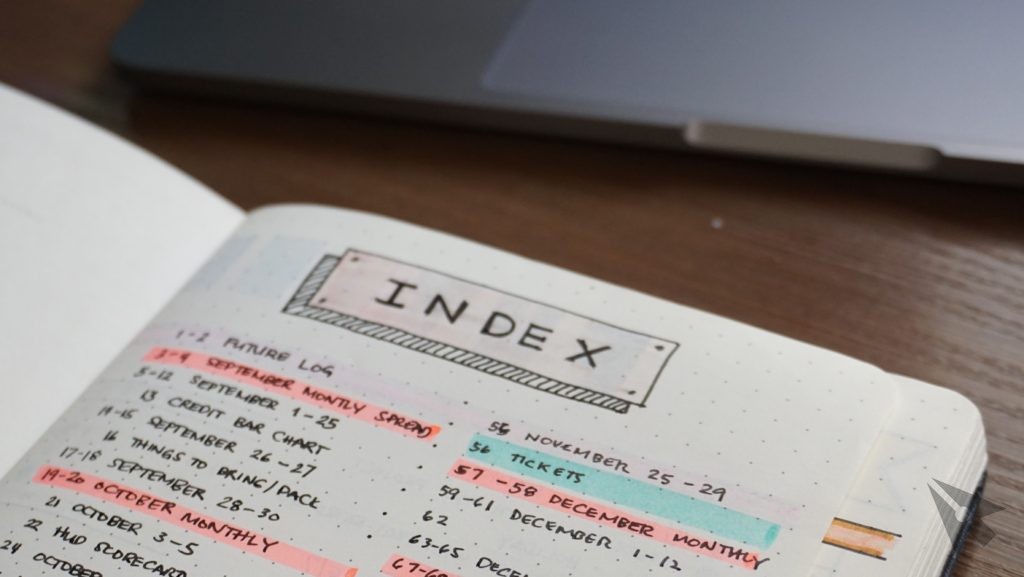You know what, drafting this blog article has opened up new things (in a bullet journal perspective) for me. Because I always want to give you an informative article, I do some research before providing facts. I’ve been bullet journaling for 3 years (as of writing) but I am still learning a lot about the Bullet Journal. I’ve come across a few things that I never realized before. So here, we’ll talk about understanding the index, how to ACTUALLY use it, do you need this feature of the Bullet Journal?
“I don’t think it should have been called an index”
I’ve always wondered why Ryder Carroll (the creator of the BuJo) calls his Bullet Journal’s table of contents an index when it’s technically a table of contents. As I was preparing to debunk this, I wanted to define and differentiate the table of contents and the index. Give you a comparison table and all that.
| Table of Contents | Index |
| Typically in first pages of the book | Typically situated in the back of the book |
| Topics are grouped per chapter and are broader | Topics are not grouped and are more specific |
| Chronologically arranged | Alphabetically arranged |
I skimmed through The Bullet Journal Method again for good measure and I noticed that his process of indexing is almost exactly what an index should look like. I flipped over to his book’s table of contents (which he calls an Index) to take a photo of it – and then I saw it – the answer to my question. NOW it made sense! Thanks for that powerful footnote, Ryder.

Index in the Bullet Journal World
Let’s get into the strict definitions first, from Wikipedia.


T.O.C. vs. Index. In the Bullet Journal we combine the table of contents and a traditional index to keep the content in your notebook organized and easily accessible.
–Ryder Carroll, The Bullet Journal Method
The Bullet Journal Index is a hybrid of a traditional table of contents and the index. It’s basically a simplified version of a conventional index and a more purposeful table of contents. And I’ve never fully understood it until I was writing about the topic.

How To Set Up and Use an Index
Prior to writing this, I wanted to make sure that my index was also set up. I haven’t been updating my index since mid-2017 (my 2nd BuJo notebook). I also haven’t done it in 2019 because I was hesitant to use the index.
Now that I know more, I realized that I wasn’t using the index the way that it should have been used. I know that the Bullet Journal is just a framework but it was design liked this for a good reason – to be more organized.
According to Ryder,
Setting up your Index is easy. Simply leave the first couple pages of your notebook blank and give them the topic of “Index.” As you start to use your book, add the topics of your entries and their page numbers to the Index, so you can quickly find them later.
from Bullet Journal Knowledge Base
I think here’s where the other gap is. When I was reading about the Bullet Journal in 2016, it didn’t occur to me that it had an indexing element to it and I merely viewed it as a ToC. There were also very few “real life” examples at that time and if they were, they actually looked like the traditional table of contents. And that’s exactly how I did it.

Tips or things to remember when creating your index
- Best format is “topic: page x” rather than “page x: topic” – it’s easier to add page numbers for recurring collections. Also – when you look for a page, you would always look for the topic first rather than the page number.
- You can opt not to write daily logs in the index (unless you have something important that you would reference in the future)
- Stick with collections and monthly pages
- Collections don’t have to be written in consecutive pages
- You can have a dedicated index for collective topics
Rewriting my Index
The Rhodia Goalbook (and the standard Leuchtturm notebooks) have dedicated spaces for the topics. Since it was already in tabular form, I went on about listing down the pages and their corresponding page numbers.

Click here to get this notebook
I used the guidelines that I specified earlier and was able to come up with a shorter yet useful index. You can see that I was already able to implement page numbers on recurring collections (see “Content Calendar” topic in the image below). I feel that by doing it this way, I was able to make indexing less of a chore.

Do You Need An Index?
Of course, the Bullet Journal, as defined by Ryder, is a framework. You don’t have to follow it to the letter. You also won’t see the purpose of the index especially when you start but you might need it when you’re 6 months and x collections deep in your bujo.
Since this is just a framework, there are several ways to go about it. You can always try it table of contents style or use tabs to mark the pages.
See more index variations here.


Amazon Disclosure
Rediscover Analog is a participant in the Amazon Services LLC Associates Program, an affiliate advertising program designed to provide a means for sites to earn advertising fees by advertising and linking to Amazon.com







